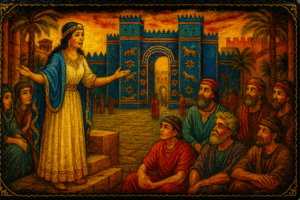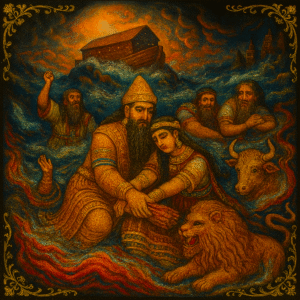Why Stories?
 This sequence of posts is about storytelling. We’re going to explore stories together. We’ll talk a bit about why and how we tell them, including a few little tricks you might find helpful when weaving your own.
This sequence of posts is about storytelling. We’re going to explore stories together. We’ll talk a bit about why and how we tell them, including a few little tricks you might find helpful when weaving your own.
But first we should think about why they’re so important to us. Let’s start with a little quiz…
When do you think the first film was made? (No cheating, now).
The first motion pictures began to appear in the late 19th century – for example the Roundhay Garden Scene of 1888. It was a little time longer before they were used as a story-telling medium. So let’s say just over 100 years ago.
(OK, I did cheat on that one, so I don’t blame you if you did too.)
When was the first story written?
 The first written story we know of at the moment is probably the Epic of Gilgamesh, which was discovered on clay tablets in Mesopotamia a few decades before those first films were made.
The first written story we know of at the moment is probably the Epic of Gilgamesh, which was discovered on clay tablets in Mesopotamia a few decades before those first films were made.
Parts of it seem to be about 4000 years old. It contains, among other things, an account of events which read very like the Garden of Eden and Noah’s Flood; which suggests that even in Old Testament times there was no such thing as a new story.
When was the first story told? (Think about it).
We don’t know, of course, but it was almost certainly long, long before the Epic of Gilgamesh was pressed into those tablets of clay. It will have been told, by grunt and by gesture, as soon as the human mind had evolved to be capable of imagining a scene and communicating it to another human.
Imagination and communication: these are the things that make us who we are. The story of stories must be as old as humanity itself.
When you think about the role that stories play in our lives today, in films, books, poetry and theatre, in gossip, in news items, sometimes in teaching, preaching, art, song, stand-up comedy or dance, you begin to see that stories are the main way humans entertain each other, and that this has probably been so for as long as we have been human.
